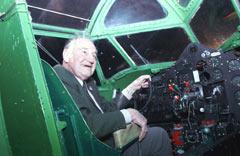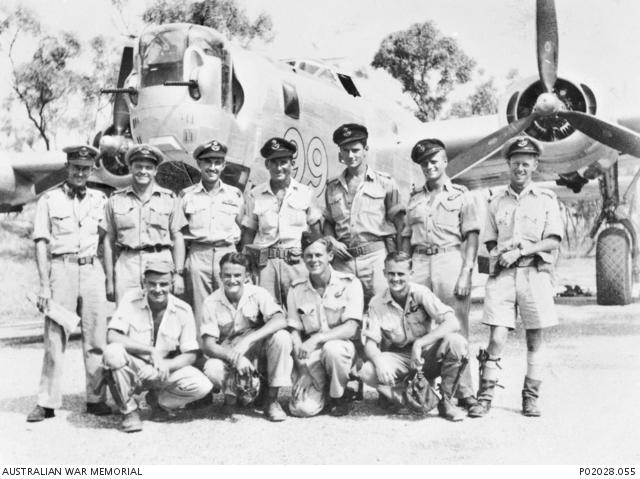Lockheed Hudson A16-105 and Ray Kelly
Early in 2001, the Australian War Memorial acquired a Second World War Lockheed Hudson (A16-105). Since then, curatorial staff have been trying to contact crew members they had identified as having been associated with this aircraft during its war service. In November 2001, they discovered that Canberra resident Flying Officer Ray Kelly, who trained with No. 1 Operational Training Unit (OTU) at Bairnsdale during late 1941 and most of 1942, had flown A16-105.

Ray’s logbook reveals that he operated this aircraft as pilot on 8, 20 and 24 September 1942; his instructor on 8 and 24 September was Flight Lieutenant David Campbell (who later became famous as a poet). Two months later, Campbell was flying the same plane on supply flights from Port Moresby to Buna. But Ray had been there before him. After passing his training with an “above average” assessment, Ray was transferred on 28 October 1942 to No. 6 Squadron, RAAF, then operating Hudsons from Port Moresby on anti-submarine patrols and ammunition supply drops to the Buna battlefield. Ray recalls the most hazardous part of the flight to Buna being the climb over the Owen Stanley Range prior to first light. On 22 November 1942, for example, his logbook records a two-hour return flight “dropping supplies forward troops near Gona Mission”. This simple statement belies the inherent danger involved in this operation.
After crossing the Owen Stanleys, pilots faced attention from Japanese fighters and anti-aircraft fire from the ground. While on a reconnaissance mission which fanned out from the vicinity of Milne Bay towards Bougainville and New Britain on 24 February 1943, Ray and his crew encountered bad weather which delayed their return, to the point where his Hudson, A16-245, ran out of fuel. His logbook records: “had to ditch aircraft on North side of Milne Bay. Spent 15 minutes in water before natives arrived with boats. Eventually rescued by MTB [motor torpedo boat]. Aircraft sank after 5 minutes.” Ray’s extensive account of the ditching appears in Andrew Hendrie’s book Seek and strike (London, 1983) The Hudson sank nose first and ended up resting on its back on the bottom of Milne Bay, about 100 metres off the northern shore. In 2000, relying on information supplied by Ray, a diving team located and filmed the Hudson lying on the white sandy bottom of Milne Bay, still relatively complete with its bomb bay doors open. This footage appears in a locally produced video, Winged ghosts of the Pacific (2000).
In July 1943, five months after Ray had ditched the Hudson in Milne Bay, No. 6 Squadron started preparing to convert to the newly produced Australian version of the Beaufort bomber. Ray was pulled out of operational work and returned to No. 1 OTU for 16 months training on Beauforts. To this day he can’t understand why, after all the effort expended on Beaufort training, he was then immediately moved to No. 23 Squadron, who had just converted to the B-24 Liberator. After a mere four weeks operational familiarisation on US Liberators at the Crew Replacement & Training Centre (CRTC), based at Nadzab in New Guinea, Ray was piloting a US Liberator with its crew of ten on a strike on the Japanese fortress of Rabaul

Ray completed the war captaining Liberator bombers, but he retains a special affinity with Hudsons. On Wednesday 2 October 2002, he brought his family to the Memorial’s ANZAC Hall to see A16-105 on display there.
For more information
See Wartime - Issue 17, Pedigree Hudson lands: The story behind a recently acquired aircraft in ANZAC Hall by David Vincent, and Piloting a butcher’s shop by Chris Goddard